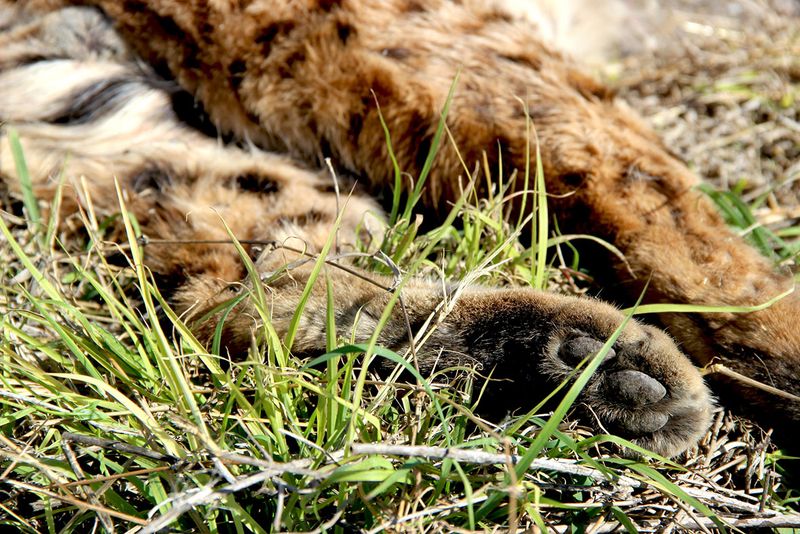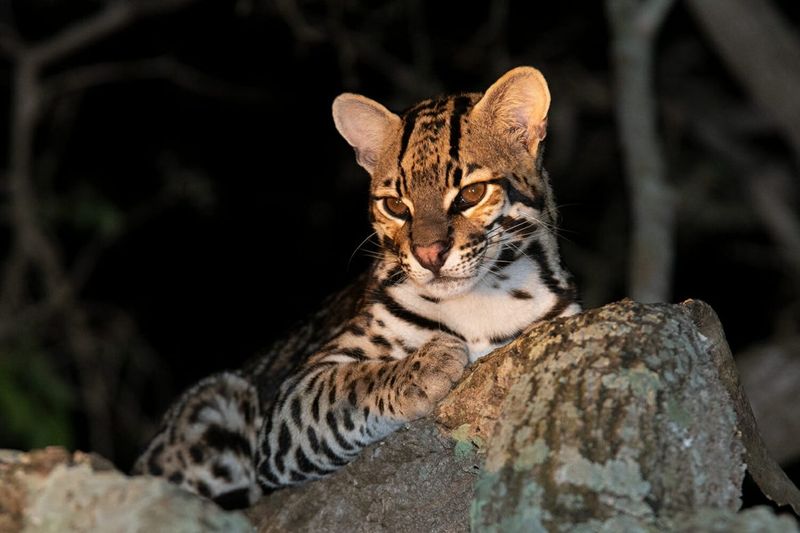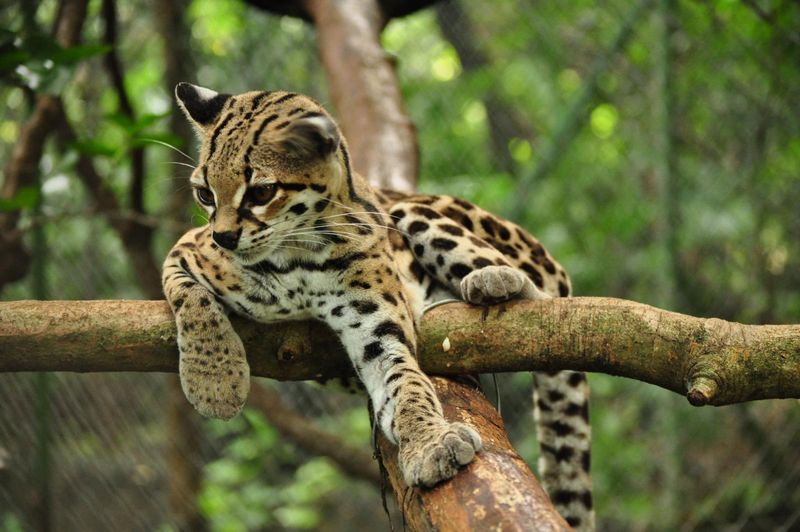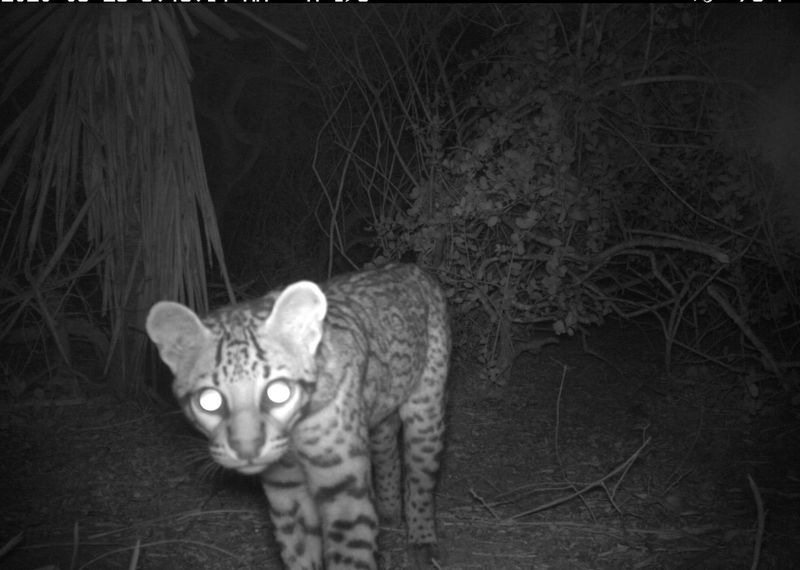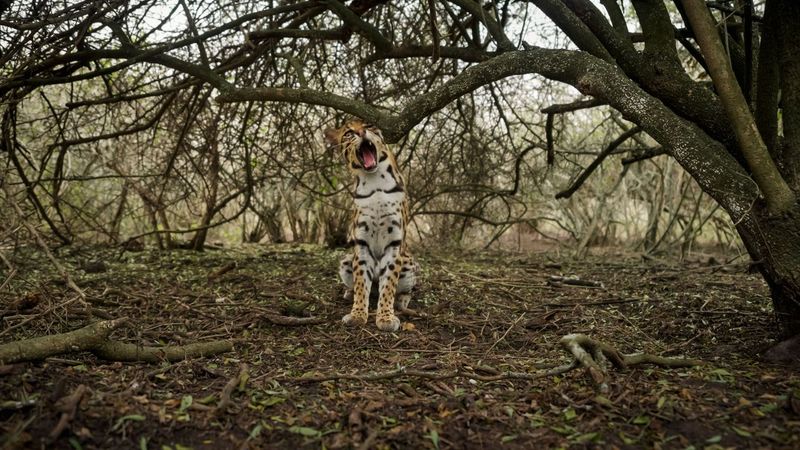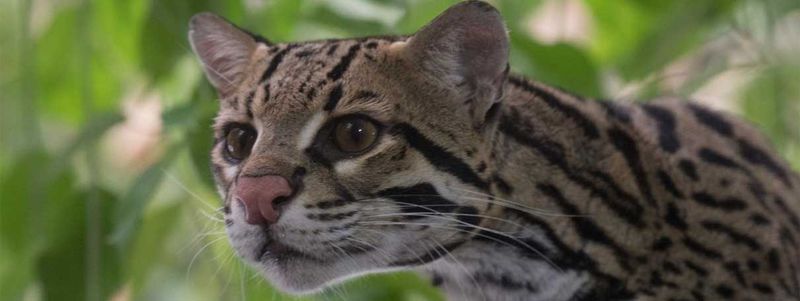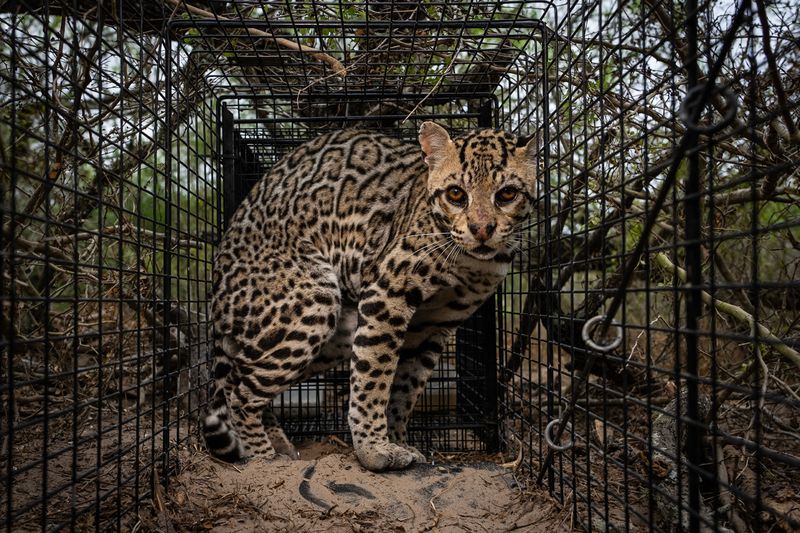📖 Table of Content:
- 1. Tracks (Paw Prints)
- 2. Scat (Feces) with Fur or Bones
- 3. Scrape Marks or Scent Marking
- 4. Nocturnal Camera Trap Footage
- 5. Prey Remains in Specific Patterns
- 1. Habitat Destruction & Fragmentation
- 2. Road Construction and Vehicle Collisions
- 3. Illegal Wildlife Trade & Poaching
- 4. Agricultural Pesticides & Rodenticides
- 5. Fencing & Infrastructure Barriers
In the dense brushlands and forests of the Americas, a mysterious and elusive predator silently roams—rarely seen, yet ever-present to those who know the signs. The ocelot (Leopardus pardalis) is a medium-sized wild cat known for its striking rosette-patterned coat and solitary nature. Though beautiful, this secretive feline often goes unnoticed, blending seamlessly into the shadows of its natural habitat.
Monitoring the presence of ocelots is vital for conservation efforts, particularly in regions where their populations are dwindling. Unlike more conspicuous animals, ocelots leave subtle indicators of their activity—clues that trained eyes or wildlife enthusiasts can identify. Recognizing these signs not only reveals the animal’s presence but also informs land management and protective action.
Equally important is the understanding of how human activity, even when unintentional, can severely impact these cats. Roads, deforestation, and even farming techniques all contribute to the growing pressures ocelots face. As we explore both the signs of their presence and the threats to their survival, a clearer picture emerges of how fragile their existence truly is—and how human awareness can be the first step toward their protection.
1. Tracks (Paw Prints)
Often, the most revealing clue of an ocelot’s presence lies in the tracks it leaves behind. These paw prints are roughly 1.5 to 2 inches wide and show four rounded toes with no claw marks, a telltale trait of retractable claws. Found in soft ground like mud, sand, or forest trails, the tracks form a straight walking pattern typical of feline movement. Experienced trackers can differentiate these from similar-sized prints of bobcats or domestic cats by noting the asymmetry and pad shape. Following a trail of tracks may indicate travel routes or frequently used paths. During the rainy season, fresh prints are more visible and easier to document. This non-invasive method is a foundational tool for wildlife biologists monitoring elusive species like ocelots.
2. Scat (Feces) with Fur or Bones
Wild cats, including ocelots, leave behind scat that provides insight into their diet and presence. Typically tubular and segmented, the feces often contains bits of fur, bones, feathers, or insect exoskeletons—evidence of recent meals. Researchers analyze scat not just to confirm presence, but also to understand dietary habits and ecosystem roles. Ocelots often deposit scat along trails or on prominent surfaces as territorial markers. These spots are reused, creating “latrine sites” that are revisited over time. DNA sampling from scat also allows for individual identification and population studies. Despite being less obvious than tracks, scat is a powerful ecological signpost.
3. Scrape Marks or Scent Marking
Territorial by nature, ocelots communicate through scent and visual cues like scrape marks. By dragging their hind legs or using claws, they leave shallow grooves on the ground or base of trees. These markings, combined with urine spraying or glandular secretions, create a chemical signature unique to each cat. Locations of these signs are often consistent and near paths or habitat edges. Unlike the claw marks of bears or large cats, ocelot scrapes are small and low to the ground. They are especially frequent in areas with overlapping territories or breeding activity. Observing multiple scrape sites in proximity can hint at population density in the region.
4. Nocturnal Camera Trap Footage
Technology plays a major role in detecting elusive nocturnal wildlife like ocelots. Motion-activated trail cameras set along animal corridors often capture images or videos during the late hours when ocelots are most active. These cameras help avoid direct confrontation and minimize disturbance to the animal. Clear footage can reveal coat patterns, behavior, and even interactions with prey or other ocelots. Long-term deployment of such devices provides data on activity patterns, population numbers, and movement ranges. Conservationists often use camera trap data in habitat preservation plans. It’s a reliable, modern approach to tracking a wild cat that prefers the cover of darkness.
5. Prey Remains in Specific Patterns
A silent predator, the ocelot leaves behind clues in the form of partially eaten prey. Often, the remains of small mammals, birds, or reptiles are found with specific bite patterns—typically on the neck or skull. These kills may be left under bushes or in secluded areas, consistent with the ocelot’s private feeding habits. Unlike messy scavengers, ocelots consume prey in a relatively clean and organized fashion. If found in clusters or consistent locations, these remains may indicate a feeding ground or den nearby. Wildlife monitors analyze these remains alongside other signs to confirm ocelot presence. Such forensic evidence adds valuable depth to ecological surveys.
1. Habitat Destruction & Fragmentation
The expansion of agriculture, logging, and urban development continues to erode the natural habitats that ocelots depend upon. As forests are cleared for crops or infrastructure, the dense cover that provides both protection and hunting grounds is lost. This not only reduces the area in which ocelots can live but also splits populations into isolated pockets. Fragmentation leads to decreased genetic diversity and fewer breeding opportunities. It can also increase human-wildlife conflict as ocelots are forced closer to human settlements. Protected areas help mitigate this, but enforcement and sustainable land-use policies are essential. Without strategic habitat conservation, the species risks local extinction in fragmented zones.
2. Road Construction and Vehicle Collisions
Few threats are as immediate and fatal as roads slicing through wildlife corridors. Ocelots, being primarily nocturnal and wide-ranging, often attempt to cross highways and rural roads in search of food or mates. This puts them at high risk of being struck by vehicles, especially in poorly lit or high-speed areas. In parts of Texas, vehicle collisions are among the leading causes of ocelot deaths. Wildlife crossings and fencing can dramatically reduce such incidents. However, these solutions are not always implemented or maintained effectively. The presence of roads also increases human access to remote habitats, compounding risks from other threats. Road ecology must be considered in any development plan near ocelot territory.
3. Illegal Wildlife Trade & Poaching
Despite legal protections, ocelots continue to be targeted for their stunning coats and exotic appearance. The black-ringed rosettes on golden fur have long made them a symbol of luxury in the fur trade. In some regions, individuals are also captured for illegal pet ownership, which causes trauma and often leads to poor survival outcomes. While international agreements like CITES restrict trade, enforcement varies greatly between countries. Poaching can also be driven by perceived threats to livestock or game animals. Raising public awareness and supporting anti-poaching units are crucial components of deterrence. Each illegally taken ocelot weakens the already fragile population base.
4. Agricultural Pesticides & Rodenticides
Chemical use in farming introduces toxic substances into the food chain, indirectly affecting predators like ocelots. Rodents or insects exposed to these poisons may still be alive when consumed by the ocelot, delivering a harmful dose. Over time, this bioaccumulation can lead to neurological issues, reproductive failure, or death. Pesticides also reduce prey populations, creating food scarcity in treated areas. Organic farming and integrated pest management offer safer alternatives that reduce ecological impact. While harder to regulate on a broad scale, local education campaigns can help farmers make more wildlife-friendly choices. The health of top predators reflects the overall health of the ecosystem.
5. Fencing & Infrastructure Barriers
Physical barriers like fences, walls, and irrigation canals can become insurmountable obstacles for ocelots. Although agile climbers, ocelots may not be able to cross tall or electrified fencing, cutting off access to essential resources or breeding areas. Over time, these limitations lead to isolated populations with reduced genetic flow. Some barriers also create deadly traps—like steep-sided canals that offer no escape. Wildlife-friendly designs, including fence gaps and canal bridges, have been proposed in many areas. Yet their implementation lags behind expanding development. Minimizing fragmentation through thoughtful infrastructure planning is a critical step toward preserving the species’ mobility and survival.

